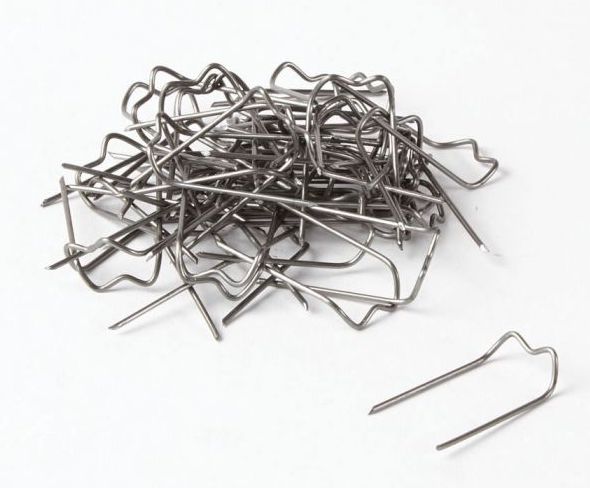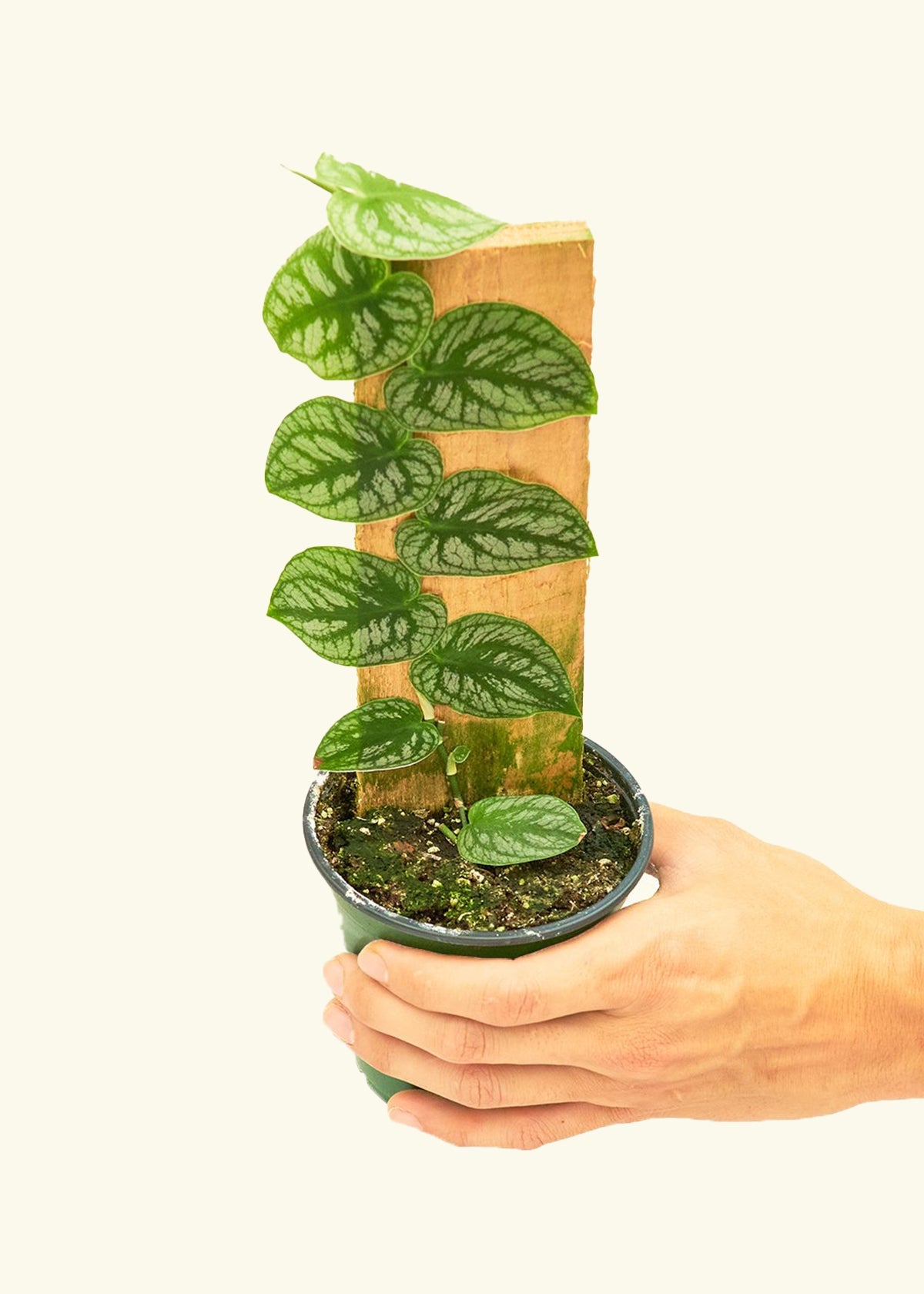
Monstera dubia. Copyright: Rooted.
Contents
- Top Tips
- Location, Water, Humidity & Fertilisation
- Common Issues
- Origins, Temperature, Propagation, Repotting & Toxicity
Need the answer to a specific plant query? Book a 1-to-1 video call with THE HOUSEPLANT DOCTOR™, the website's friendly author, to overcome and address your niggling problem! Available on iMessage, WhatsApp, Facebook Messenger & more.
Top Tips & Info
- Care Difficulty - Easy
- If you ace its locational needs (light, humidity & temperature), your Monstera dubia will be an easy plant to grow.
- We recommend keeping yours in a sunless windowsill (north, north-east or north-west facing) or under a grow light (preferred). Ensure humidity levels stay above 70%, with the room temperatures not dipping below 18℃ (64℉).
- Water its soil once the top third dries out; try using lukewarm water, if possible.
- Fertilise using a 'Houseplant' labelled feed every third water in the spring and summer, reducing this to every fourth in the colder months (mid autumn to late winter).
- Repot every three years using our 'Monstera' labelled potting mix (or 'Houseplant' soil with added bark and perlite) in the spring; water the plant 24hrs before the action to reduce the risk of transplant shock. Scroll down to the 'Repotting' section to learn more about repotting a specimen that's attached to a moss pole or wooden plank!
Location & Light - 🔸🔸
A brightly lit windowsill with little to no sunlight is best for quality growth, as excessive exposure can cause the plant to adopt a ‘washed-out' pale look, often accompanied by crispy new growth. Darker locations that offer no sufficient light are also not viable due to the increased chance of over-watering and possible death.
A north, north-east or north-west facing windowsill is best for your Monstera dubia, or in a cabinet with grow lights to promote regular, reliable growth.
Water - 🔸🔸🔸
Soil: Persistent droughts should undoubtedly be avoided as this species cannot tolerate dry conditions. During the spring and summer, allow around the soil's top third to become dry in between waters, reducing this further in the cooler months.
Additional Steps for Monstera Grown On a Moss Pole or Wooden Plank: It's important to occasionally mist your pole or plank three times a week to ensure the foliage (& adventitious roots along its stem) is hydrated enough. We recommend using lukewarm water to avoid shocking the plant.
Extra Information on Its Watering Needs: Those grown in darker locations will require fewer waterings, compared to those that are situated in brighter light levels. Never pour cold water straight into the soil as this will shock the roots, potentially resulting in stunted growth. Under-watering symptoms include yellowed and browned foliage, crispy leaves and possible curling. Over-watering symptoms include rapidly yellowing leaves, stunted growth, and stem collapse. If the base of the stem is beginning to rot, take stem cuttings and propagate via water.
Humidity - 🔸🔸🔸
Although normal room humidity is acceptable for Monstera dubia, we recommend misting the foliage (& moss pole or wooden plank if present) three times a week until the leaves are dripping with water. If misting isn't for you, try introducing a pebble tray to maintain a constant level of humidity.
Fertilisation - 🔸🔸
Feed every third drink of water during the growing period and every fourth in the period of mid-autumn to late winter, using a 'Houseplant' labelled fertiliser. Never apply a 'Ready to Use’ product into the soil without a pre-water first, as it may burn the roots and lead to yellowed leaves.
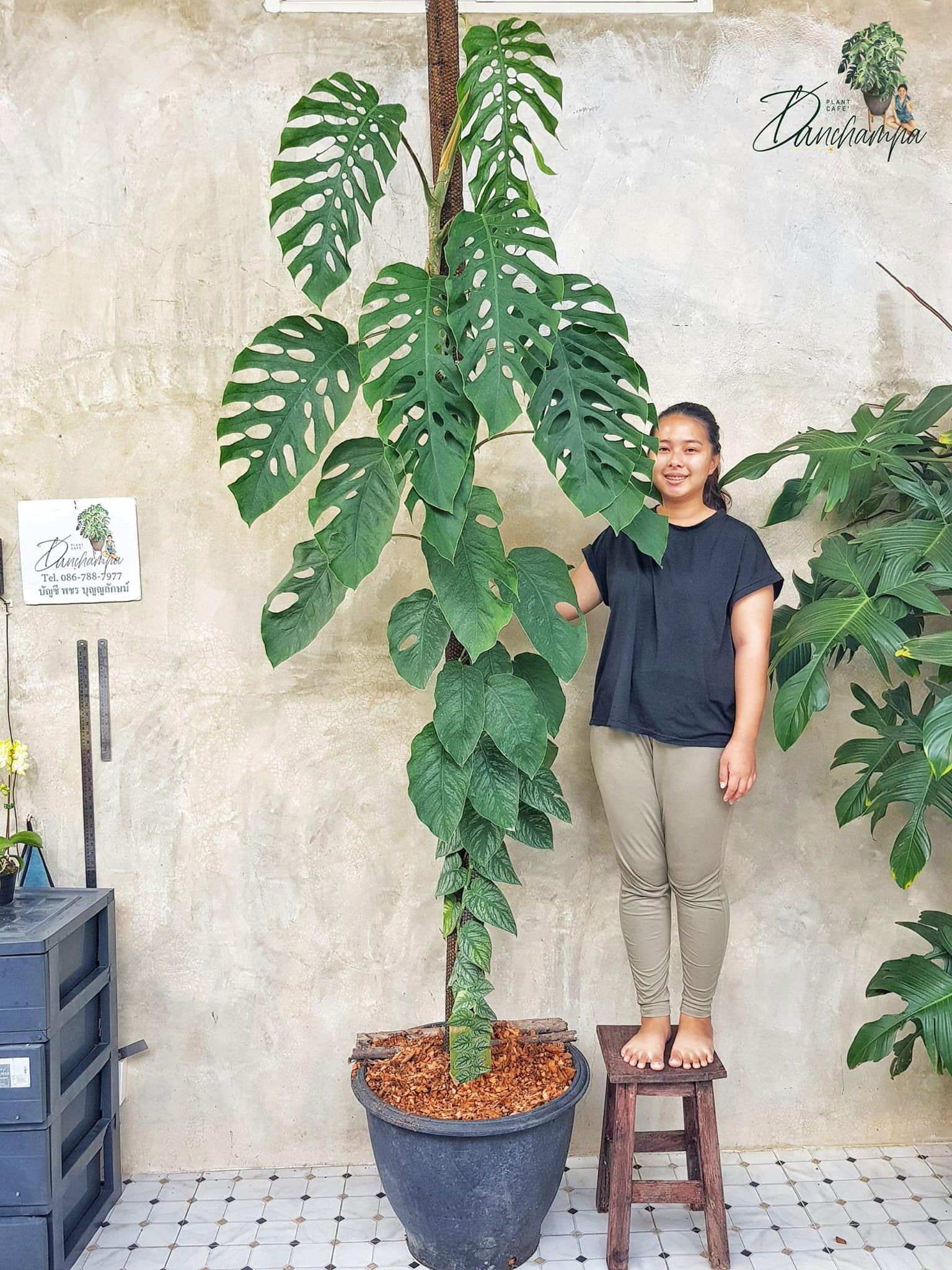 Every leaf on your Monstera dubia should grow slightly larger than the one before if its care requirements are met. Copyright: Unknown.
Every leaf on your Monstera dubia should grow slightly larger than the one before if its care requirements are met. Copyright: Unknown.
Common Issues with Monstera dubia
Rapidly yellowing lower leaves (closest to soil) are a clear sign of over-watering, usually caused by too little light. Although they can do well in darker locations, the frequency of irrigations must be reduced to counteract the chance of root rot. People don't realise that a plant's root system needs access to oxygen too; when soil is watered, the air will travel upwards and out of the potting mix. A lack of accessible oxygen for the roots will cause them to subsequently breakdown over the oncoming days. Click on this link to learn more about root rot and how to address it, and always feel the pot's weight for confirmation (a heavy pot = good soil moisture).
Is your Monstera dubia producing smaller leaves or just naked, leggy stems each time it grows? It's most likely to do with its light levels or low temperatures. We recommend improving its location by placing it in a sunless windowsill or under a grow light for better, more reliable growth. You can also consider pruning any leggy, leafless stems back to the first leaf to promote a new cluster of foliage in months to come. Other reasons for its reduction of leaf size could be: an absence of a moss pole or plant to climb up, a lack of fertilisation and/or root rot.
Root rot is another common issue with specimens sat in too moist or waterlogged soil for long periods. Symptoms include rapidly yellowing leaves, stunted growth and a rotten brown base. Take the plant out of the pot and inspect health below the soil line. If the roots sport a yellow tinge, you're good to go, but if they're brown and mushy, action must be taken immediately. More information about addressing root rot can be found on this link.
Mould developing on the soil means two things - too little light and over-watering. Despite the harmlessness of the mould, it'll prove unsightly to most gardeners and is therefore removed once known. To remove, replace the top two inches of the soil for a fresh batch of 'Houseplant' labelled compost. Either increase the amount of light received (no direct sunlight for the first few weeks to prevent environmental shock) or decrease the frequency of waters slightly. If the mould is accompanied by yellowing lower leaves, you may also have a case of root rot.
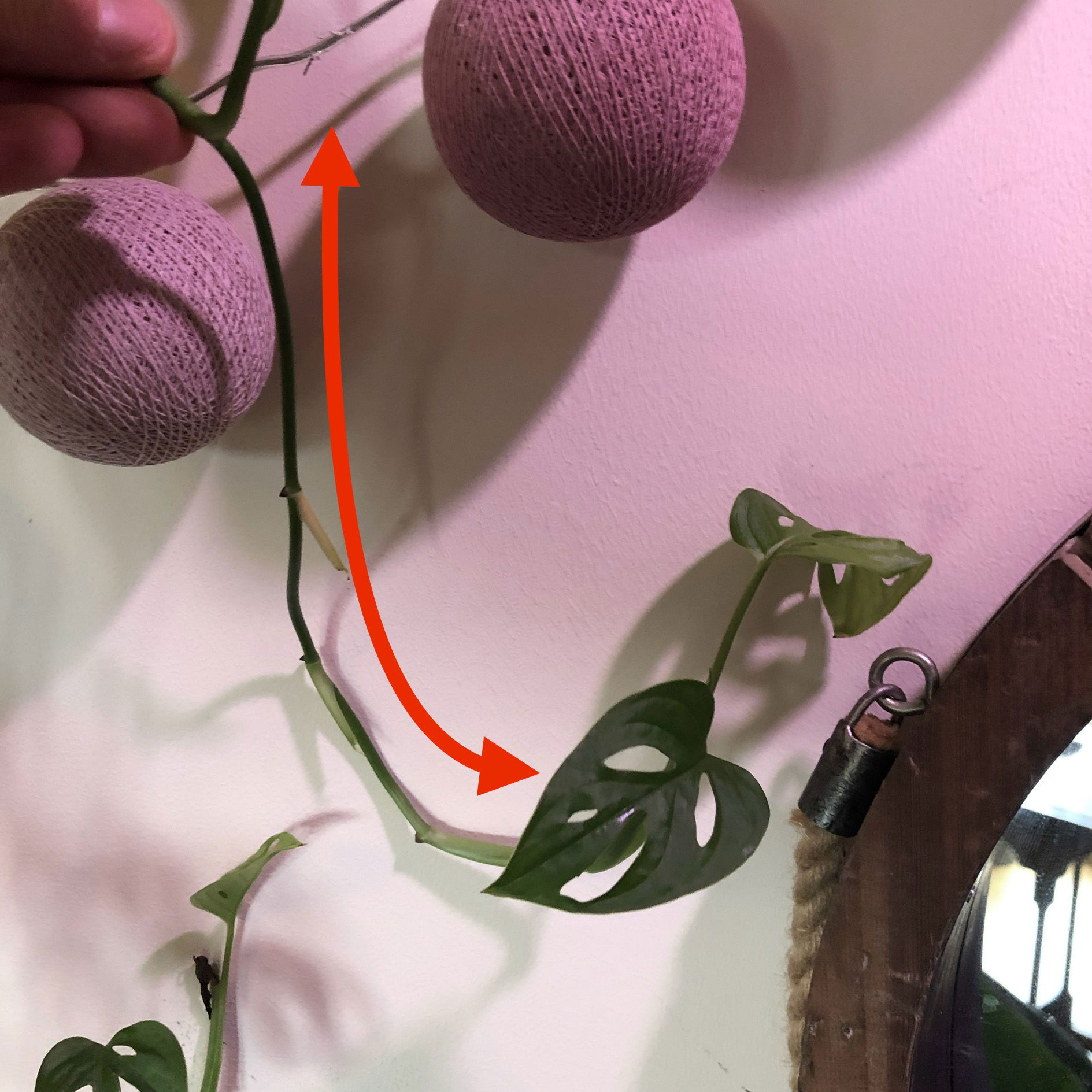 If your Monstera has lost leaves in a certain area of its stem (or is growing long stems with no leaves), this is to do with too little light. Consider pruning the stem(s) back to promote a bushier appearance and propagate the cuttings in water. Transplant them into the original plant's soil once the roots are 5cm (2 inches to further thicken the overall foliage. Plant: Monstera adansoniiPests can be a problem with Monstera dubia. Thrips are small, oblong-shaped yellow or black critters, that'll slowly suck out the chlorophyll and sap out of the leaves. Symptoms include yellow or brown areas developing on the leaf, raised brown bumps on the leaf's undersides, and rapid foliage loss. Check both sides of the leaf, most notably along the midrib, for the 1cm-long insects that'll move relatively quick to its size. Click here to read our article about the eradicating Thrips, along with some extra tips that you may not find elsewhere!
If your Monstera has lost leaves in a certain area of its stem (or is growing long stems with no leaves), this is to do with too little light. Consider pruning the stem(s) back to promote a bushier appearance and propagate the cuttings in water. Transplant them into the original plant's soil once the roots are 5cm (2 inches to further thicken the overall foliage. Plant: Monstera adansoniiPests can be a problem with Monstera dubia. Thrips are small, oblong-shaped yellow or black critters, that'll slowly suck out the chlorophyll and sap out of the leaves. Symptoms include yellow or brown areas developing on the leaf, raised brown bumps on the leaf's undersides, and rapid foliage loss. Check both sides of the leaf, most notably along the midrib, for the 1cm-long insects that'll move relatively quick to its size. Click here to read our article about the eradicating Thrips, along with some extra tips that you may not find elsewhere!
Too low humidity can cause browning leaf tips with yellow halos. Although this won't kill your specimen, you may want to increase the local moisture to prevent the new growth from adopting these symptoms. Mist or rinse the foliage from time to time and create a humidity tray whilst the heaters are active to create a stable environment for your specimen. See image below.
Due to Monstera dubia being partially variegated (multicoloured), it shouldn't be kept in a darker area due to the risk of lower rates of photosynthesis. Although this may sound harmless, prolonged low rates will gradually result in weakened health, as the plant won't convert enough light into storable energy. Remember that lighter-toned sections of the leaf (variegations) won't contribute to photosynthesis, so consider increasing the light levels by relocating it and feed every third water to promote better, more colourful leaves.
Failed propagated stem cuttings - There are several reasons why the cuttings haven't rooted well, including: the time of year (spring or summer is best), its size (Monstera cuttings should have at least three leaves), poor growing conditions (replace water weekly for water-propagated cuttings, and avoid over-watering for soil-grown plants), and its growing environment (a bright sunless windowsill and warmth is important).
Want to train yours up a moss pole? Our Moss Pole Hooks are the perfect tool to keep your specimen growing the way it should! Click on the image to shop:
Origins
Monstera form part of the Araceæ family that holds genera such as Spathiphyllum (Peace Lilies), Alocasia and Zamioculcas (ZZ plants) with natural distributions across tropical America. The name, Monstera, derives from Latin word for 'monstrum', referring to the size some Monstera deliciosa (the type species) can grow to (20m). The species' Latin epithet of dubia, refers to the uncertainty botanists & authors faced when completing its taxonomy.
Why Does the Monstera have Fenestrations? (Holes in its Leaves)
Although the leaf structures aren't fully understood, many lean on the idea that the serrations and fenestrations (holes) can alleviate the effects of hurricanes or high winds. The smaller surface area of the leaf reduces the effects of air resistance created by the wind, thus resulting in less damage during windy spells. Others argue it's a natural mechanism to help the leaf remain cool during sunny spells, as fenestrations only occur once the plant reaches a certain height/maturity (the taller the stem, the more exposure to the sunlight, etc.). This idea is supported by its leaf dimorphism, where the juvenile leaves will be hole and mature leaves sporting serrations and fenestrations. (See the second image).
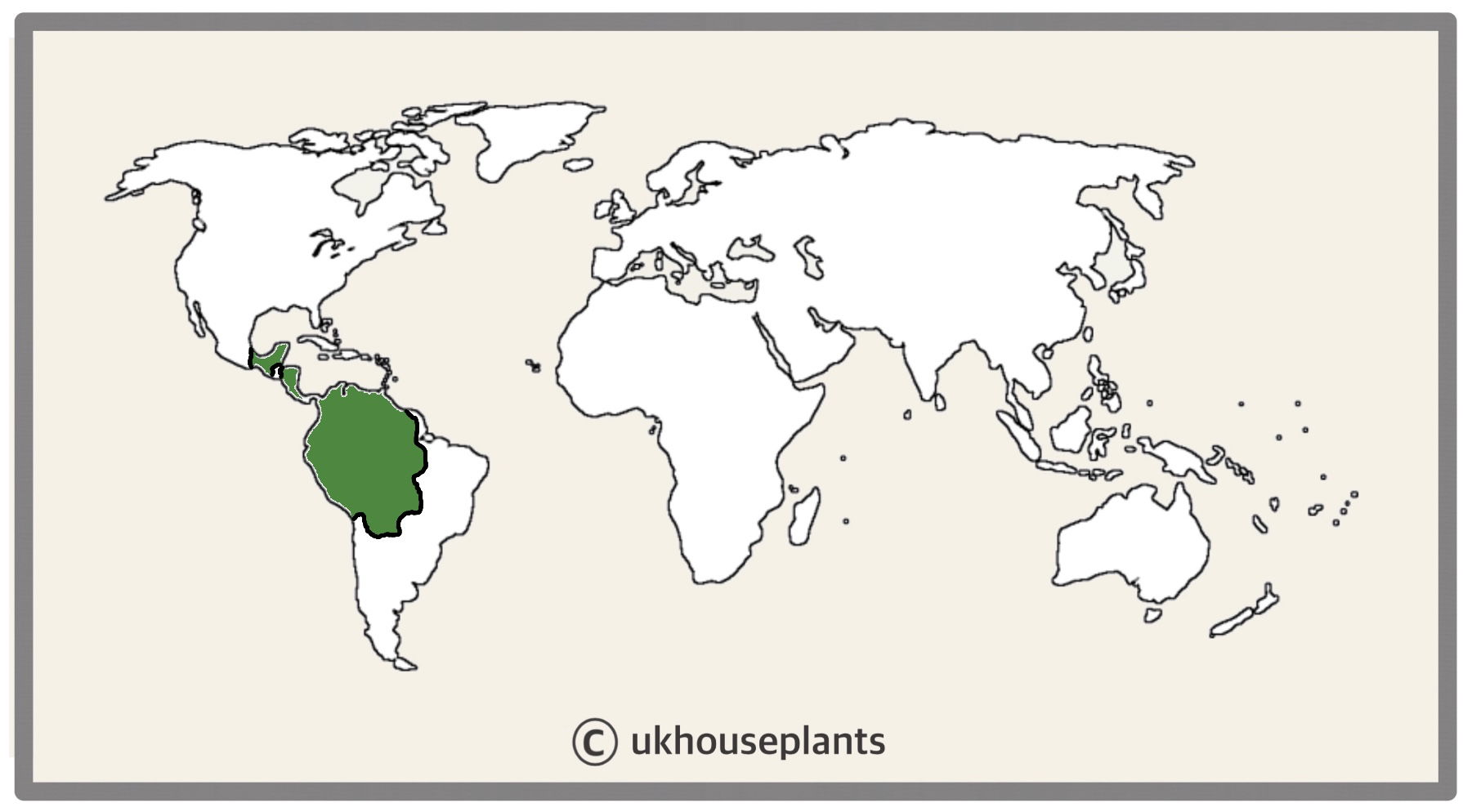 The natural distribution of Monstera dubia.
The natural distribution of Monstera dubia.
Temperature
15° - 30°C (59° - 86°F)
H1a (Hardiness Zone 13) - Must be grown indoors or under glass all year round. Never allow temperatures to dip below 15℃ (59℉) or permanent damage may occur in the likes of flower loss, stunted growth and blackened or yellowed leaves.
Spread
Each individual stem can grow to 2.5m in height and 0.40m in width. The ultimate height will take between 3 - 5 years to achieve, with up to 15cm of growth put out each season.
Pruning & Maintenance
Remove yellow or dying leaves, and plant debris to encourage better-growing conditions. While pruning, always use clean scissors or shears to reduce the chance of bacterial and fungal diseases. Although the aerial roots aren't exactly appealing, you mustn't remove them as this can stress the plant and potentially weaken it.
If your Monstera dubia produces smaller leaves (or no leaves at all), cut the leggy stem back to the last leaf to encourage better growth. Use a fertiliser once every third water and consider relocating it to a brighter spot.
Propagation
Via Seed or Stem Cuttings.
Stem Cuttings via Water Propagation (Easy)
- Choose the healthiest, most established vines. This propagation method can be taken from spring to summer, using between two to five leaves, with the vine being at least 8cm (2.5 inches) in length with two nodes (one for foliar development and the other for root growth). Although more nodes are fine, be sure only to submerge the bottom ones in water to avoid unneeded rooting elsewhere on the stem. (More on this later)
- Cut directly below a node using a clean knife to reduce bacteria count. Remove the lower half of the leaves and place the vines into a container of lukewarm water. Be sure to submerge at least one node into the water, or else the root development will be hindered.
- The leaves must stay above the waterline for the prevention of disease.
- Replace the water weekly, using lukewarm water to avert shocking the cutting with cold temperatures.
- Once the roots surpass 4cm (2 inches) in length, it's time to pot the cutting.
- Choose a potting mix - as long as it has a well-draining nature, most soils are fine. Either 'Houseplant' labelled compost or our Monstera Potting Mix is suitable for potting up.
- Use a 7cm (2 inch) plastic or coir pot that has suitable drainage holes. Try not to transplant the cuttings too deeply in the soil as rot may occur.
- Fill the bottom quarter of the pot with soil, before sitting the cutting on top. Fill the remaining gaps with compost until the soil line reaches four-fifths of the pot's height. Lightly tap the pot's side to consolidate the soil into place. (Don't press down on the soil!)
- Provide bright, indirect light in a windowsill or under a grow light, along good humidity by placing the potted plant into a transparent plastic bag for the first couple of weeks.
- Open the bag every two days for an hour for the prevention of disease. After a month of being placed in soil, remove it from the bag and follow the care tips provided above.
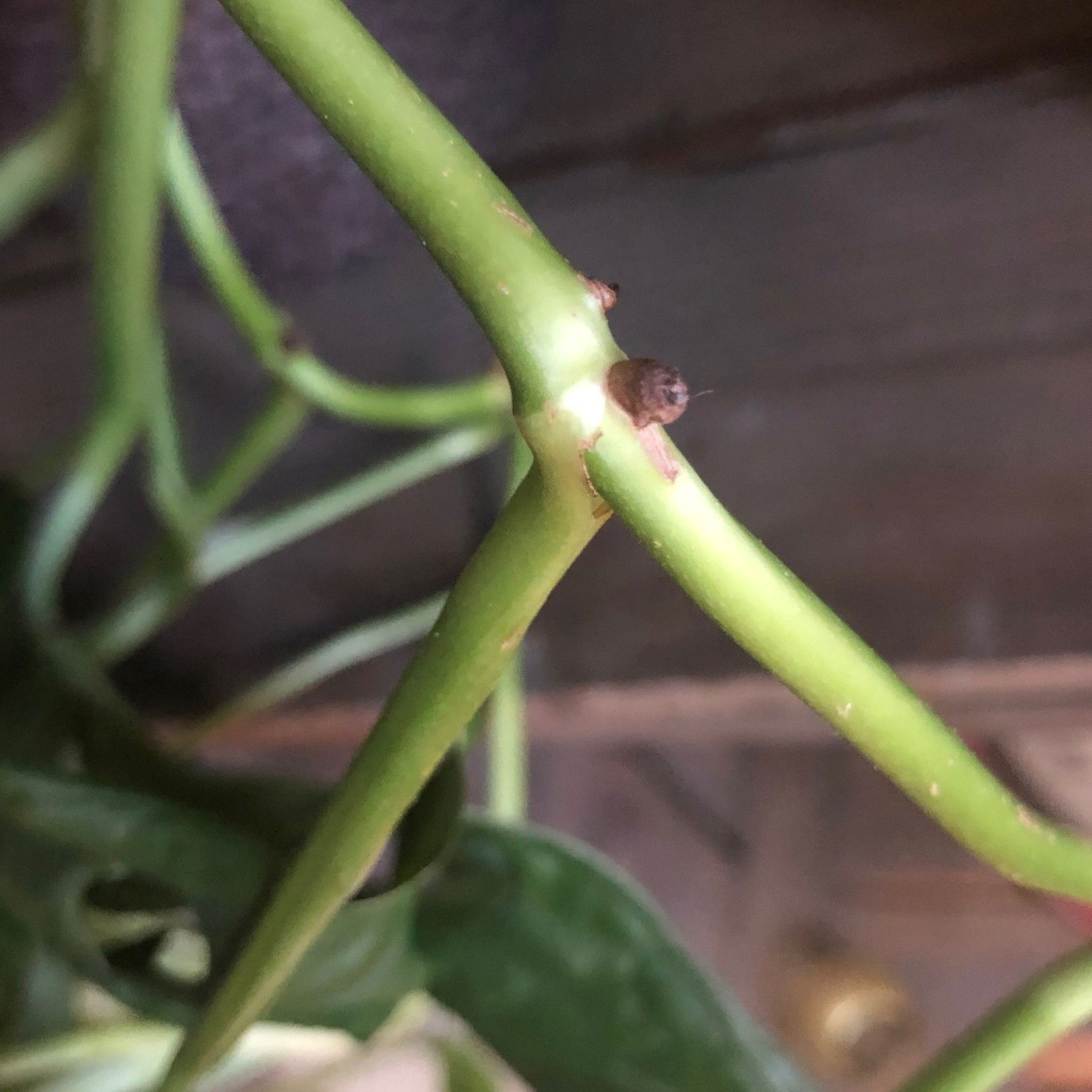 Pictured here is a node that can produce a new branch of foliage and aerial roots to start off the propagation process. The plant pictured is a Monstera adansonii, but the principle & node identification is almost identical.
Pictured here is a node that can produce a new branch of foliage and aerial roots to start off the propagation process. The plant pictured is a Monstera adansonii, but the principle & node identification is almost identical.
Stem Cuttings via Soil Propagation (Moderate)
This second option is still easy to perform, but it'll need some extra steps to avoid dehydration while the cutting roots in the soil.
- Choose the healthiest, most established vines. This propagation method can be taken from spring to summer, using between two to five leaves, with the vine being at least 8cm (2.5 inches) in length with two nodes (one for foliar development and the other for root growth). Although more nodes are fine, be sure only to submerge the bottom ones in water to avoid unneeded rooting elsewhere on the stem. (More on this later)
- Cut directly below a node using a clean knife to reduce bacteria count. Remove the lower half of the leaves and place the vines into a container of lukewarm water. Be sure to submerge at least one node into the soil, or else the root development will be hindered.
- Choose a potting mix - as long as it has a well-draining nature, most soils are fine. Either 'Houseplant' labelled compost or our Monstera Potting Mix is suitable for potting up.
- Use a 7cm (2 inch) plastic or coir pot that has suitable drainage holes. Try not to transplant the cuttings too deeply in the soil as rot may occur.
- Fill the bottom quarter of the pot with soil, before sitting the cutting on top.
- Fill the remaining gaps with compost until the soil line reaches four-fifths of the pot's height. Lightly tap the pot's side to consolidate the soil into place. The leaves must always stay above the soil-line for the prevention of disease.
- Provide bright, indirect light in a windowsill or under a grow light, along good humidity by placing the potted plant into a transparent plastic bag for the first couple of weeks. Humidity will be your cutting's best friend, so ensure the plant doesn't dehydrate because of dry air.
- Open the bag every two days for an hour for the prevention of disease. After a month of being placed in soil, remove it from the bag and follow the care tips provided above.
Flowers
As the Monstera dubia is part of the Araceæ family, it'll produce toxic flowers that'll bare large similarities to Peace Lilies, with a modified leaf (spathe) circulating around the site of pollination (spadix). Unfortunately, it's highly unlikely that your Monstera will flower indoors due to the imperfect growing conditions.
 The Monstera dubia flower as shown on Ecuagenera's website. Copyright: Ecuagenera (Click image to see their page)
The Monstera dubia flower as shown on Ecuagenera's website. Copyright: Ecuagenera (Click image to see their page)
Repotting
Repot every three years using either a 'Houseplant' labelled compost or our Monstera Potting Mix and the next sized pot with adequate drainage. Hydrate the plant 24hrs before tinkering with the roots to prevent the risk of transplant shock. For those that are situated in a darker location, add a thin layer of small grit in the pot's base to improve drainage and downplay over-watering. Click here for a detailed step-by-step guide on transplantation, or via this link to learn about repotting with root rot.
If you're thinking of repotting a specimen that's growing up a moss pole, never remove the attached aerial roots as the disturbance could put further stress on the plant. Extend by purchasing another same-sized pole and pushing directly into the hollow hole in the original's top - its moss-like material may have to be cut off from the top to access the hollow centre. Get a long, sturdy stick that has a similar length to the two poles combined and place in the two's centre to support the weight. Always perform the repot BEFORE adding another pole, as it'll prove more challenging due to the weight distribution and overall balance. NEVER remove soil from the roots, or over-touch the root system, as this will cause transplant shock and possible death.
Pests & Diseases
Keep an eye out for mealybugs, spider mites, scale, thrips & whitefly that'll locate themselves in the cubbyholes and undersides of the leaves. Common diseases associated with Monstera dubia are root rot, red leaf-spot, botrytis & southern blight - click here to learn more about these issues.
Toxicity
This plant is classified as poisonous due to varying concentrations of calcium oxalate crystals found around the plant's body. If parts of the plants are eaten, vomiting, nausea and a loss of appetite could occur. Consumption of large quantities must be dealt with quickly; acquire medical assistance for further information.
Retail Locations
Mostly via Online Stores.
Book a 1-to-1 Call with THE HOUSEPLANT DOCTOR™
If you need further advice with your houseplants, book an advice call with ukhouseplants' friendly and expert writer today! This can be done via a video or audio call on most apps, including Facebook, FaceTime & Skype. A ten-minute call costs £5.99 (US$7), or £15.99 for thirty minutes. You can ask multiple questions, including queries on plants, pests, terrariums, repotting advice and anything in between. Please consider supporting this service to keep ukhouseplants thriving!
